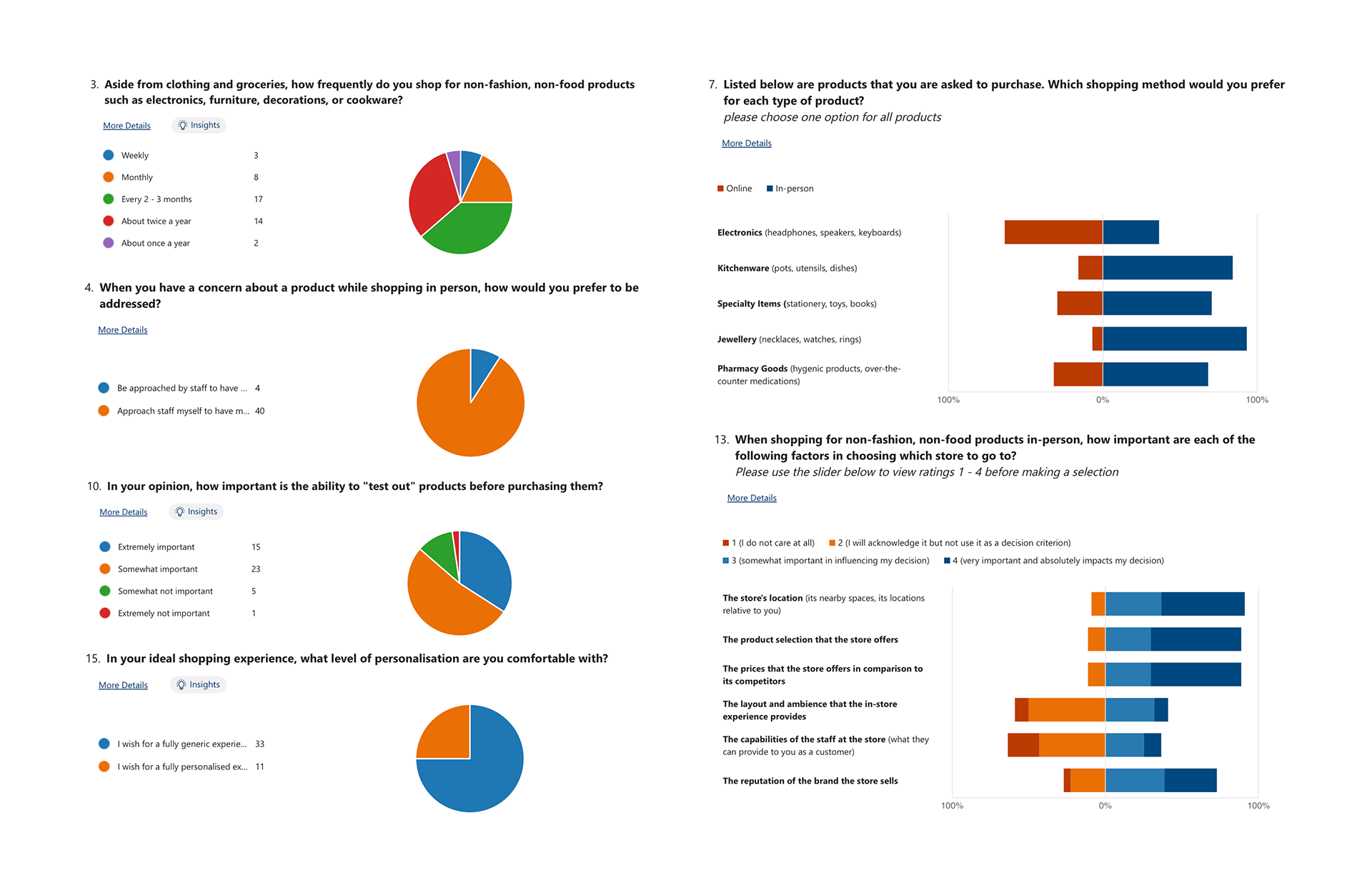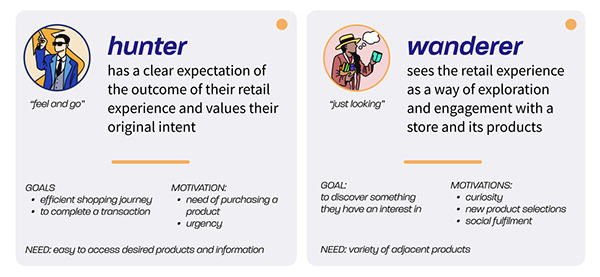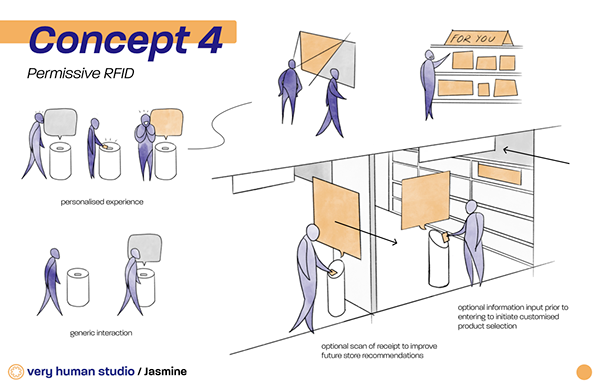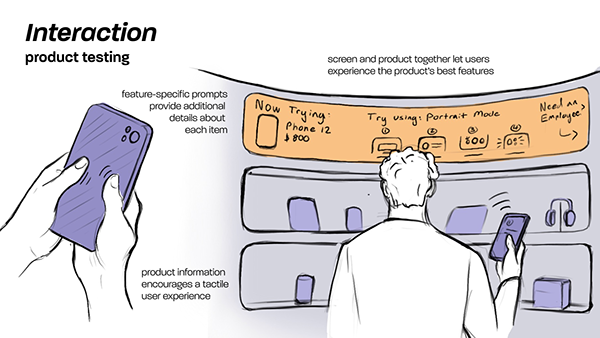REDEFINING THE ELECTRONICS RETAIL EXPERIENCE.
design brief: An ecosystem that re-imagines the physical retail process of electronics through responsive recommendation by providing customers with a more informative and experiential way of shopping.
team: J. Hsu, O. Kamperman, Y. Zhang, Y. Zhao
role: Project Manager + User Researcher
VERY HUMAN STUDIO.
As part of the GT Interactive Product Design Studio, our team of four took on Cognizant's challenge of designing in anticipation for the future of retail.
IN-PERSON SHOPPING.
Online and physical stores both have strong presences that offer unique features to attract their customers, each with numerous stakeholders. In focusing on physical retail, our team chose to narrow our design solution towards a specific type of product in an industry with a clear set of concerns geared towards the closest levels of interaction with the customer and related artifacts.
THE CUSTOMER PERSPECTIVE.
In order to assess the full scope of existing customer needs, we conducted multiple on-site observations and interviews that we compiled with secondary research into current market trends of physical retail. All data points were combined and used by our group to create multiple clusters via affinity mapping to guide our design scope.



USER MINDSETS.
We identified two primary types of customers active in the retail space. The goals and needs of the Hunter and the Wanderer served as a basis of concept generation for future design considerations.


INSIGHTS TO OPPORTUNITIES.
Our user research told us that the level of interaction customers had in stores was dependent on their purchasing needs, which meant that in-person retail needed to be able to cater to those different levels. Customers were reliant on in-store product information to make purchasing decisions, with employees being the current way retail supports this. A key insight was that customers were not concerned about their purchasing data being used, only with how obvious stores were with using it.



CONCEPT DEVELOPMENT.
The team ideated over 100 thumbnail sketches that evolved into 12 independent concepts that targeted a specific aspect of the customer's shopping journey. Based on external feedback and team discussions, we moved forward with 6 concept ideas that could be pooled into an overall system design to target the initial user needs of data privacy, customization, and recommendation. Our cohesive solution that addressed these issues features an Experience Ecosystem.












USABILITY TESTING.
To improve the viability of our Experience Ecosystem concept, we constructed a full-scale model of the Experience Hub shelves and a small-scale store model for users to interact with. Participants were invited to go through rounds of product recommendation with the Experience Hub to generate feedback. Each session asked questions regarding ergonomics, interaction flow, and their expected store walk-through.



EVIDENCE-BASED MODIFICATIONS.
User testing revealed new insights about our concept. We sorted through their quotes, actions, and decisions and categorized them through affinity-mapping to create modifications to our concept as next steps.



THE EXPERIENCE ECOSYSTEM.
The Experience Ecosystem re-imagines physical retail through responsive recommendation, providing customers with a more informative and experiential way of shopping. The store layout allows customers to freely explore products, the Experience Hub facilitates in-depth product interactions, and the display desk offers a more familiar and traditional in-store experience.



PERSONALIZATION WITH PRIVACY.
The Experience Hub relies solely on anonymous market trends, user interaction time, and selected focus features to create its recommendation system tailored to each customer's immediate interests without relying on individual consumer data. With our design, businesses are able to gain valuable information the same way they can from online retail, with the added benefit of anonymity from in-person shoppers.
IN-PERSON ONLINE RETAIL.
Each feature of the Experience Hub merges the current gap between online and in-person retail. Customers enjoy the benefit of online recommendation algorithms and extensive product information without needing to sacrifice physical product interaction.
